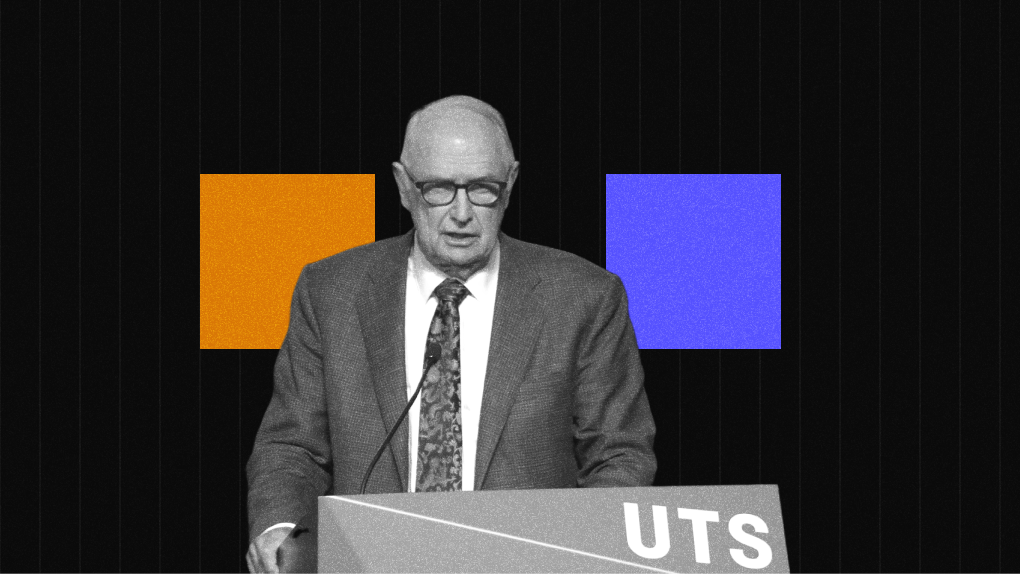Transcript:
It is terrific to be back amongst the Economic Society of the ACT, so thanks for the invitation. I was, if I remember correctly, almost President after Bruce Chapman invited me to take over from him in 1995, but as soon as I agreed with Bruce to do this I left Canberra for Sydney. A very difficult phone call to Bruce followed.
Tonight, I want to cover three topics.
1. To outline the Superpower thesis, which I find keeps needing to be repeated.
2. To describe at a high level the policies that need to be followed to succeed with the Superpower vision.
3. To discuss the range of positions currently being taken on climate policies and how we need to bring more alignment on this crucial issue.
1. Why Australia can and should become a Superpower
In answer to the obvious question of what is The Superpower Institute (TSI), it has been established to change the narrative on the economy and climate change in Australia.
Rather than discussion of these issues occurring in isolation, TSI seeks to give climate change a central role in our economic debate, and to place climate policy in the context of the wider Australian economy.
Philanthropically funded and as a not-for-profit entity, the Institute is undertaking and then making available the research to achieve this.
Australia is the world’s largest exporter of gas and coal taken together. Many focus on the costs of losing what has been our large comparative advantage.
But Australia has likely the world’s best combinations of wind and solar energy resources, and it has enormous sources of biomass for a zero emissions chemical industry.
Renewable energy and hydrogen are not easily exported, and are expensive to export, so it makes economic sense for a range of energy intensive industries to now be located in Australia.
The easiest way to explain this is to use the example of iron metal. Australia currently exports the iron ore, the metallurgical coal used to reduce the iron ore to iron metal, and both thermal coal and gas which can be the heat sources for the iron making process. Australia is the largest exporter of the first two products, and is a major exporter of the latter two.
Some have long said, and are still saying, that we should use all these Australian ingredients and make iron metal in Australia now. But there is no logic to government intervening in the choices the market has made; it seems best for Australia in the fossil carbon world to do as we are.
In the coming zero carbon world, however, it makes sense to now make green iron in Australia. Green iron will very likely need green hydrogen as the reductant that gets the iron ore into iron metal. Making green hydrogen requires a massive amount of renewable energy to power electrolysers that separate the H2 (Hydrogen) from the O (oxygen) and to provide the heat for the green iron making process.
Green iron should be made in Australia because the economics flip. For example, exporting metallurgical coal raises its cost by perhaps 5-10% while exporting hydrogen more than doubles its cost via a complex and difficult process.
Likewise, renewable energy should be used close to where it is produced; it is certainly difficult and expensive to export it from Australia. All overseas studies that I am aware of suggest that Australia is likely the cheapest place in the world to make green iron. And those seeking to make green iron by importing hydrogen, those studies say, will be uncompetitive.
The world needs Australia to make many green products in Australia. This is because we have massively more low cost renewable energy resources than we need. We can be an exporter of energy intensive green products. Countries such as Japan, Korea, most of Europe and even China do not have sufficient renewable energy resources even to make all the electricity they need domestically. They will need to either import renewable energy, ammonia as a derivative of hydrogen and/or use nuclear energy - all at great cost – simply to meet their domestic electricity needs.
It follows that they will need to import many goods with the energy intensity embedded in them. Australia’s advantages relative to the rest of the world are such that we can materially improve the prospects of achieving the world’s climate objectives.
In addition to our just over 1% of world emissions now occurring in Australia, we could remove around another 6-9% of global emissions that other countries will find very difficult to abate by making, for example, green iron, green aluminium, green transport fuels, green urea and green silicon in Australia. By turning our iron ore into green metal alone Australia would reduce world emissions by around 3%; more than double the contribution to world emission reduction from decarbonising Australia.
Just think about this and then reflect on where our priorities are.
Australia covers about 5% of the earth’s land surface; supplying about 7-10% of the world’s renewable energy is no stretch given our abundant solar, wind and land resources.
Australia can have more employment and higher incomes in the relatively short term, and be much richer in the longer term, by moving early and decisively in building and expanding the zero emissions Superpower export economy.
Indeed, if Australia seizes the opportunity it can repeat the experience of the China resources boom which peaked around 10 years ago. But this time the opportunity can be sustained, rather than boom and bust, and we can manage it better for broadly based development.
2. The necessary policies to achieve the Superpower vision
There are many policies Australia needs to realise this vision. These were outlined in the National Press Club address Ross Garnaut and I gave in February this year.
These policies may not be sufficient as we will learn more about the barriers being faced by potential green energy intensive exporters; but they are all necessary.
First, we need to ensure that Australia’s zero carbon products are properly recognised as zero carbon by the EU so that they do not incur a carbon price under Europe’s Carbon Border Adjustment Mechanism (CBAM).
This mechanism levels the playing field between products that contribute to global warming and those that do not, and so will be of enormous benefit to Australia’s green exports, especially in the early stages. Australian green iron can likely already compete with iron produced with fossil fuels in the EU with its CBAM.
For Australian goods to be recognised, Australia’s systems for measuring greenhouse gases need to satisfy EU requirements. The Government is currently developing a Guarantee of Origin scheme, but it is unclear if this will meet EU requirements. The government should commit to developing a scheme that is EU compliant.
Second, implement what we have called the Superpower Innovation Incentive Scheme (SIIS) to recognise the wider benefits from those investing early in green exports that can build Australia as a green export Superpower. The wider benefits are the expensive learning by doing that comes from producing such products at scale by those who go early, with benefits to followers that the original investor cannot capture.
We envisage easy to administer criteria such that ARENA would determine that the project brings innovation, and that the carbon emissions saved are above a certain % of overall project costs, so that the SIIS only aims to support use of a large amount of renewable energy or biomass, and so only goes to projects in which Australia has a long term comparative advantage.
Some projects that clearly meet this comparative advantage threshold would be, for example, green iron, green aluminium, green polysilicon, green transport fuels and green urea. Grants would be given of up to 50% of capital costs for at least the first one, two or three facilities, depending on how much learning and scale can be achieved.
These first two points above, of course, address the two externalities that it is crucial to recognise in the net zero transition. One is the negative externality associated with the damage caused by carbon emissions, although there need to be steps beyond recognition under the EU’s CBAM; the second is the positive externality from the benefit to others from innovation from the early movers.
Third, commit that the public sector should often provide the ‘natural monopoly’ services such as hydrogen storage and transport, and the electricity transmission, needed for the Superpower, given that supply needs to be built ahead of demand, that all should be able to connect into these systems, and that rate of return regulation in private ownership often biases to higher costs for consumers.
Economists need to reflect whether we made an error in urging privatisation of natural monopoly services. What is worse; sometimes sub optimal incentives in public ownership, versus too many gaming opportunities when the private sector owns natural monopolies and an inability to signal broader objectives than simply profit maximisation?
Many of the superpower industries will be initially located away from the current National Electricity Market, although there would be advantages in the long-term integration of some initially isolated networks.
Fourth, commit to open trade, which as we all here know has been the underpinning of Australia’s past success. The Hawke/Keating reforms of 30-40 years ago opened up the Australian economy.
This means we should not follow the USA Inflation Reduction Act approach of being inward looking and protectionist and without consideration of deficits and debt.
Australia’s best approach for its own prosperity and to make the best contribution to world emissions reduction is to be outwardly focussed, relying on the lowest cost inputs from around the world.
The USA IRA is contributing to the USA being a high cost location for renewable energy given local production requirements and the effects of protection and budget deficits on the real exchange rate. That may work for an inward focussed approach, but it cannot suit an export focussed Australia.
Indeed, we should make access to markets for Superpower goods a major focus of Trade Policy. Initially there will need to be a strong focus on the markets of Northeast Asia (Japan, China, Korea) and Europe (including the UK, and others that are not members of the EU).
Fifth, boost resources and adjust procedures so that approvals processes for projects are considerably streamlined, which they can be while ensuring vital First Nations and environmental issues are appropriately dealt with. There is no logical reason why Australian project approvals take as long as they do. This must be fixed.
Sixth, ensure the Government’s Job Skills Australia initiatives, in addition to boosting a number of trades such as electrical trades, restore Australia’s strengths in geoscience, metallurgy, chemical engineering and other skills needed for the Superpower. Australia has allowed these core skills to wither, and this must be reversed.
Seventh, maintain the essential features of the electricity wholesale market that has worked well. That is, for example, do not move to a capacity market which will require excess generation which will be paid for by higher electricity prices for consumers. The wholesale market is providing strong incentives for investment in storage and peaking, more cost-effectively than international and Western Australian capacity markets.
Eighth, introduce a Carbon Solutions Levy (CSL) at all fossil fuel extraction sites in Australia (around 105 sites), and on all fossil fuel imports to Australia, to meet the many funding needs already mentioned (to fund the SIIS, and transmission investment); to potentially assist in meeting the needs of the EU’s CBAM; and to maintain a strong budget position to ensure Australia has a low cost of capital.
The latter is vital as Australia makes extremely capital intensive investments. We believe Australia’s budget position is under challenge from many directions, not least from the recently announced Capacity Investment Scheme which will see the Commonwealth offering to underwrite future renewable energy capacity.
We urge the CSL’s introduction by 2030-31 as this will be necessary to fund the CIS liabilities, the SIIS and infrastructure investments, which by then in all cases will be significant, and should assist in Australian goods being properly recognised under the EU’s CBAM.
We have suggested that the CSL be imposed on all emissions from fossil carbon wherever they occur in the world, at the level of the EU’s carbon price (five year inflation-adjusted average, currently around $90 per tonne of emissions).
To avoid a double imposition, sales to any country with arrangements that generate a comparable green premium from which Australian zero-carbon goods can benefit would receive a rebate for those sales. The rebate would apply now to members of the EU, the UK and other countries of Europe. It may apply to the US if the joint arrangement with the EU that is currently under discussions is executed.
We hope that by 2030, our major trading partners in Northeast Asia would qualify for exemption so that Australian zero carbon goods are competing widely on a level playing field with products that contribute to global warming.
The well over $100bn pa proceeds in year 1, which then decline slowly, should as just mentioned, be applied first to fund the significant CIS liability, the SIIS and the required electricity transmission and hydrogen transport and storage. There would remain more than adequate funding to overcompensate for any effect on electricity or fuel prices, and to perhaps facilitate the restructure of road user charging.
An amount of the CSL proceeds should be kept for budget repair or funding structural reform, such as tax reform, with long term benefits for economic growth and the revenue as Australia must maintain its key advantage of a low cost of capital.
It was recognised that immediate early introduction of a CSL would be ruled out by the main political parties, as it has been. Subject to how future discussion goes, however, an alternative is to phase in the CSL earlier at half the EC’s carbon price, or $45 per carbon dioxide-equivalent tonne emitted, until 2030-31 when the price would increase to match the EC’s carbon price ($90). In addition to meeting the needs mentioned above, early introduction could also provide macroeconomic benefits and cost of living relief.
In our Press Club address Ross and I suggested, as an example, additional energy price relief of, say, $300 for households with average household usage (on top of fully compensating for the effect of the CSL on electricity prices) to households and businesses to provide significant cost of living relief; bring the current costs of the Renewable Energy Target on budget which would lower household bills by around a further $140; and remove all petrol and diesel excise which would have a significant impact on prices to road users.
As suggested by the Henry Tax Review, the Commonwealth and the States should over time develop a road user charging system to replace the declining proceeds from the CSL, as the greater use of EVs is and was always going to erode the excise base.
The reductions in electricity prices of $300 and around a further $140, as well as the significant reductions in petrol and diesel prices, would reduce the CPI by over 1.5% directly and indirectly, on a conservative estimate, which will also have implications for RBA interest rate settings.
With the CSL in place, we also said the Government would not need to subject new coal and gas fields to additional greenhouse checks; just apply conventional environmental approval processes. The CSL means they are “paying their way” in relation to carbon emissions, and so private judgements about international demand can drive whether such projects proceed.
3. Reconciling the various groups responding to these policy positions
The world’s move to decarbonisation represents an enormous transition; likely the largest Australia has had to make or will ever have to make. Being the world’s largest exporter of coal and gas, combined, makes this point clearly.
The world’s seemingly inevitable move to decarbonisation should be a significant opportunity, the Superpower opportunity, but there are perhaps three forces that could prevent this if not handled well.
First, there are those who in essence oppose moves to decarbonisation, and want to maintain our current strong advantage in the export of fossil carbon products.
They argue that moves, such as pricing carbon emissions via The Superpower Institute’s (TSI’s) proposed Carbon Solutions Levy, will simply damage our current fossil fuel exports and see others supply these products with higher world emissions. This latter proposition is simplistic because our fossil fuel exports are being sold into world markets; perhaps a few marginal projects will close but most will see lower profits as they pay for the damage their products cause.
TSI is keen to undertake research to use general equilibrium modelling to assess fully the affects of the CSL on Australian fossil fuel producers and on world prices. Hopefully this can deal with the concern being raised. This is important because by opposing moves they see as a threat to current fossil fuel production, some oppose positioning for the coming zero fossil carbon world.
Second, are the market fundamentalists who, using poor economics, oppose all forms of government intervention. Drawing on what they see as industry policy lessons of the past they say, “let the market decide our future industry winners”, ignoring the need to use basic economics and allow for externalities. Without such allowance the market will pick losers.
They will say that iron produced with fossil fuels is cheaper than green iron, so that is the end of the debate. They do not consider the cost imposed on society from carbon emissions and who should pay for that. They also do not consider the external benefits created by early investors, which generate industry-level knowledge.
In the market fundamentalists’ arguments, there are elements of sidelining decarbonisation as an issue to be dealt with separately from broader economic issues. They do not want to let this “side issue” get in the way of the usual economic issues we should be focussing on.
TSI aims to bring climate policy into mainstream economic thinking and so change this narrative.
Third, there is discussion of “Made in Australia”, but much depends on what is intended to be achieved. For some, the aim is for a minority of products relevant to the net zero transition to be made in Australia using government subsidies so there is some level of diversity of sources of supply without affecting the availability of crucial inputs to renewable energy at world prices.
For others, however, it is suggested that Australian renewable energy developers must follow a “buy local” policy? This is a problem as Australia needs lowest cost renewable energy; we do not want the problems being encountered in the US where local manufacturers want to keep out, say, Chinese solar panels available at half the price of the local product.
As already mentioned, The Superpower Institute sees opportunities opening up for Australia because the world’s net zero transition brings new areas of comparative advantage for Australia. This is where the economics have “flipped”, as described above, which we see as the Superpower opportunity.
As also mentioned above, we see a clear role for government, contrary to the view of the market fundamentalists, because there are two large problems facing those who would make green energy intensive products anywhere in the world.
First, as already stated, iron produced using fossil fuel is currently cheaper because fossil carbon produced iron metal does not pay for the cost to the environment of the carbon emissions that occur in the process.
It is rather silly that most countries want to reduce carbon emissions because of the damage caused to our climate, but will not deal with this price difference via a price on carbon emissions.
Fortunately, and as a first step, the Europeans are doing this, and their Carbon Border Adjustment Mechanism (CBAM) creates a great opportunity for Australia.
The second problem is that, while green iron making technology is proven, it has not been done at scale. Those who go first will inevitably make mistakes from which others will learn. Those mistakes will be costly for the first mover but a huge benefit to those who come after.
This “learning by doing” is a positive externality which should be recognised by government by assisting the first movers. Given the urgency of the need to decarbonise key products such as iron which currently causes 7% of world emissions, this externality is an important one. Such assistance naturally falls away after the first, say, two or three projects.
The TSI sees four requirements for Government assistance to achieve the Superpower opportunity.
One, that it is aimed at projects in industries in which Australia has or will have a comparative advantage due to the net zero transition; the Superpower industries.
Second, the assistance needs to address known positive (first mover learning, addressed by the SIIS) or negative (pricing the cost of carbon emissions) externalities.
Third, the assistance needs clear qualification rules, with limited room for government ministerial discretion and so rent seeking.
Fourth, the Government assistance needs to be at least fully funded so that Australia maintains a strong budget position and so retains its low cost of capital which is crucial for a comparative advantage in the capital intensive Superpower industries.
As an aside, it is worth noting that the domestic decarbonisation objective is currently being affected by the slow rollout of transmission lines. This will not be a problem for the Superpower export industries. Renewable energy for the Superpower industries can be well away from the current grids in areas where concerns about transmission lines will not exist. This is renewable energy for industry, not homes needing 24/7 power. Indeed, given the high cost of electricity from the current grid there is benefit in this being the case.
As another aside, more higher value goods will be made in Australia if we take advantage of the Superpower opportunity. That is the outcome, not the rationale for assistance. Indeed, the current debate has raised historical “industry policy” debates. The dreadful past examples in Australia of governments continually propping up struggling industries should not blind us to the need to address significant externalities so that markets do not pick losers.
We will wait and see on May 14, Budget night, precisely what Government policy is targeting under its “Future Made in Australia” policy.
If it is producing goods in which Australia now has a comparative advantage in the net zero world, through clear qualification mechanisms that address well defined market externalities, the Government must be applauded by all who possess sound economics, and desire Australian prosperity and reduced world emissions.
To conclude, Australia has an enormous opportunity to contribute to world emission reduction and to underpin its future prosperity. Whether this happens or not depends both on future Government policies, and whether the world is indeed, in varying ways, wanting to move to net zero.
I think it is, and so we should do all we can in Australia to seize the opportunity.
Thanks for your attention this evening.
Rod Sims
Chair, The Superpower Institute
Rod Sims AO is a Professor at ANU, Chair of Opera Australia and Chair of the National Data Advisory Committee. He previously chaired the ACCC (2011-2022), served as Deputy Secretary (Economic) in the Department of Prime Minister and Cabinet, and Principal Economic Adviser to PM Bob Hawke (1988-1990).
Rod Sims AO is a Professor at ANU, Chair of Opera Australia and Chair of the National Data Advisory Committee. He previously chaired the ACCC (2011-2022), served as Deputy Secretary (Economic) in the Department of Prime Minister and Cabinet, and Principal Economic Adviser to PM Bob Hawke (1988-1990).




